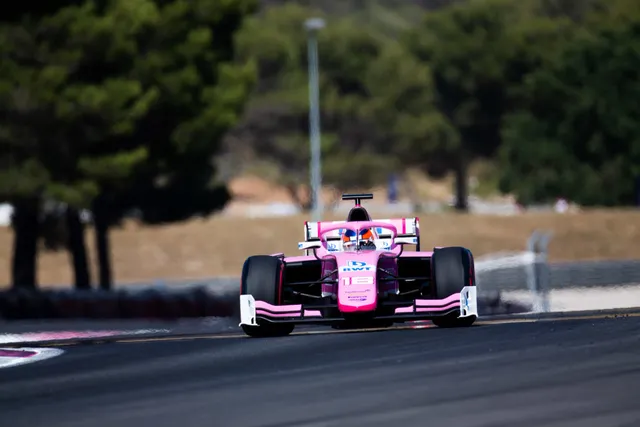Women Race-Car Drivers Are Asking F1, "When Is the Sport Going to Be Ready For Us?"

Women Race-Car Drivers Are Asking F1, "When Is the Sport Going to Be Ready For Us?"
It's been 46 years since a woman competed in a Formula 1-level motorsport race. Let that sink in. There are a variety of divisions in race-car driving, ranging from Formula 4 all the way up to F1 — the highest level of international race-car driving that participates in European Grand Prix races. Not once since 1976 when Lella Lombardi competed in the Austrian Grand Prix has another woman competed in a F1 Grand Prix. Instead, the billion-dollar industry remains dominated by men competitors, as shown in the popular Netflix series "Drive to Survive." The lack of diversity, however, doesn't translate to a lack of interest.
Abbi Pulling, a 19-year-old British driver in the Formula 3 W Series (the women's single-seater racing championship), has wanted to compete in F1 races since she was 8 years old. When Pulling got the chance to drive a F1-level car for a demonstration in Saudi Arabia (a country which just granted women the right to drive passenger vehicles just a couple years ago), she says the experience was unbeatable. "[The car] was unleashing all the power that it had," Pulling says. "Hopefully it won't be the last time I will experience it. It's what every driver . . . dreams of," she says. Unfortunately, those dreams aren't yet close to becoming a reality. There are only 20 spots available across 10 teams in F1. Securing one of those coveted positions, not only requires an extreme amount of talent, but money, training, and a series of qualifications.
"I spent four years as a test driver — I proved I can be very competitive, but it's still difficult to earn those points."
"It's a "never-ending battle," says Tatiana Calderon, a 29-year-old F1 test driver from Colombia (meaning she tests the Formula 1 cars, but does not have the qualifications to race at that level yet) and the first woman to compete on the Formula 2 level in races. You need at least 40 participation points to earn what's called a "super license" and to compete at the Formula 1 level. "I spent four years as a test driver — I proved I can be very competitive, but it's still difficult to earn those points," she explains. The super license requires a number of top-four or -five race finishes over a couple of years, and Calderon and Pulling are still at the beginning of their racing careers.
Another roadblock? The cars themselves. Women aren't always given access to the best cars (which can help competitors win a race and eventually advance to the Formula 1 and 2 levels) or even cars that fit their bodies. Since there haven't been as many women race-car drivers, the data collected on body composition and race cars has often been studied using men's measurements, explains Calderon. For example, she's a size 37 shoe (6.5 in US women's sizes), and the guys driving are a size 43 (about size 10 in US men's sizes), meaning the brake pedals in the car are designed for men's feet more than twice her size. "You need a brake pedal that fits in order to smash the brake pedal really hard to slow down," she says. Calderon (pictured below) has to use her entire foot to cover the brake and exert even more force to slow down during a race. On top of that, every time she slides into a race car, Calderon says her forearms cramp up from clutching the thick steering wheel grip designed for larger arms and hands.
Women Race-Car Drivers Are Asking F1, "When Is the Sport Going to Be Ready For Us?"

